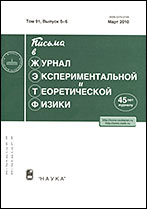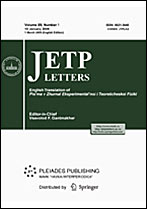|
This article is cited in 4 scientific papers (total in 4 papers)
CONDENSED MATTER
Bipolar and unipolar electrofluorescence in a molecular diode
E. G. Petrov, V. A. Leonov, Ye. V. Shevchenko
Bogolyubov Institute for Theoretical Physics, National Academy of Sciences of Ukraine, Kyiv, Ukraine
Abstract:
It is shown that unipolar electrofluorescence different from that caused by an nonidentical shift of levels of molecular orbitals involved in electron transport can be observed in a molecular diode, where the coupling of the chloroform group of a molecule with one of the electrodes is much stronger than its coupling with the other electrode. The critical potential differences are found and conditions under which bipolarity and unipolarity are observed are determined. The performed estimates of the radiation power indicate that electrofluorescence is much more efficient in 1M2 systems exhibiting unipolarity irrespective of the Stark shift of levels. In such systems, the phenomenon of electrochromism should be expected and the probability of manifestation of electrophosphorescence in them is large.
Received: 18.10.2016
Revised: 24.12.2016
Citation:
E. G. Petrov, V. A. Leonov, Ye. V. Shevchenko, “Bipolar and unipolar electrofluorescence in a molecular diode”, Pis'ma v Zh. Èksper. Teoret. Fiz., 105:2 (2017), 77–86; JETP Letters, 105:2 (2017), 89–97
Linking options:
https://www.mathnet.ru/eng/jetpl5167 https://www.mathnet.ru/eng/jetpl/v105/i2/p77
|


|





 Contact us:
Contact us: Terms of Use
Terms of Use
 Registration to the website
Registration to the website Logotypes
Logotypes








 Citation in format
Citation in format 
